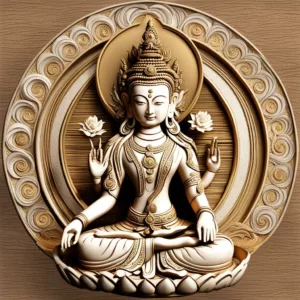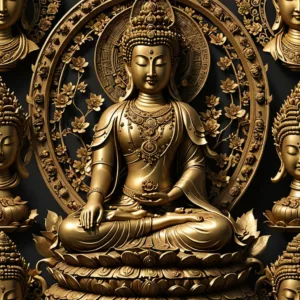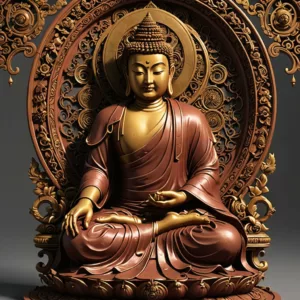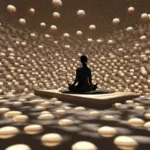Samsara, or korwa, means wheel of life. It refers to the perpetual round of birth, death, and rebirth that characterizes sentient existence. Its opposite is Nirvana, the cessation of suffering and wandering.
Table of Contents
Secrets of Meditation for Anxiety
Like millions of people, you may have suffered from anxiety for years. Meditation, yoga, peaceful music – it never works. It takes too long, and it’s not stable. Why? Because peace is treated as a cause for freedom, but it’s not – it’s the result. The cause to free yourself from anxiety is completely different.
Click now to Overcome Anxiety for good.
Knowledge Graph: Samsara (Table Format)
| Entity | Description |
|---|---|
| Samsara | The cycle of rebirth and suffering |
| Religion/Practice | Hinduism, Buddhism, Jainism, Sikhism |
| Concept | A continuous cycle of birth, death, and rebirth driven by karma and desire |
| Characteristics | Marked by suffering (dukkha) due to impermanence, unsatisfactoriness, and lack of a permanent self |
| Escape from Samsara | The ultimate goal of these religions is to achieve liberation (moksha in Hinduism, nirvana in Buddhism) and escape the cycle of samsara |
| Causes | Attachment (desire), aversion (hatred), and ignorance (delusion) |
| Mechanisms | Karma (actions and consequences) keeps beings bound to samsara through rebirth |
| Significance | Understanding samsara is crucial for spiritual progress in these traditions |
| Additional Notes | * The concept of samsara is vast and has various interpretations within each religion. * Some traditions describe heavenly realms or lower realms of existence within samsara. * Liberation is seen as awakening from illusion and achieving lasting peace. |
Samsara: related terms
LSI Keywords for Samsara
Concepts:
- Rebirth
- Cycle of Suffering
- Dukkha (suffering)
- Impermanence (Anicca)
- Unsatisfactoriness (Dukkha)
- No-Self (Anatta)
- Karma
- Liberation (Moksha, Nirvana)
- Moksha (Hinduism)
- Nirvana (Buddhism)
- Ignorance (avidya)
- Attachment
- Aversion
Religious Traditions:
- Hinduism
- Buddhism
- Jainism
- Sikhism
Related Ideas:
- Reincarnation
- Spiritual Liberation
- Enlightenment
- Waking Up
- Illusion (maya)
- The Three Poisons (greed, hatred, delusion)
- The Eightfold Path
- Karma Yoga
- Bhakti Yoga
- Jnana Yoga
Additional Terms:
- Samsaric Existence
- The Wheel of Life
- The Six Realms of Existence (deva, human, asura, preta, animal, hell)
- Spiritual Progress
- Self-Realization
- Ultimate Reality
Samsara Buddhism vs. Hinduism
While Buddhism shares its historical roots with Hinduism, it diverges in fundamental ways, offering a unique perspective on the cycle of Samsara. In Buddhism, Samsara is also characterized by the continuous cycle of birth and death, but it lacks the eternal soul or Atman found in Hinduism. Instead, Buddhism posits the concept of Anatta, or non-self, suggesting that there is no permanent, unchanging essence or soul that transmigrates through the cycles of Samsara.
Cycle of Samsara in Buddhism
In Buddhism, Samsara is often depicted as a cycle of suffering and dissatisfaction. The concept is closely tied to the Four Noble Truths, where the first truth identifies the existence of suffering, the second traces its cause to craving and attachment, the third envisions the possibility of cessation, and the fourth outlines the Eightfold Path as the way to end the cycle of Samsara. The idea is that beings continuously move through this cycle, experiencing births and deaths, driven by ignorance and the craving for existence.
How to Escape Samsara
The ultimate goal in Buddhism is to break free from the relentless cycle of Samsara and attain Nirvana. Nirvana is a state of liberation, characterized by the cessation of suffering and the end of the cycle of birth and death. The path to Nirvana involves understanding the nature of suffering, eliminating the causes of suffering (craving and attachment), and following the Eightfold Path—a guide to ethical and mental development leading to enlightenment.
Nirvana in Buddhism
Nirvana, in Buddhism, represents the ultimate goal and the cessation of suffering. It is often described as a state of perfect peace, liberation from the cycle of birth and death. Attaining Nirvana involves breaking the cycle of craving and ignorance, reaching a state of enlightenment and understanding the true nature of reality. While Nirvana is the ultimate goal, it is not a place or realm but a profound transformation of consciousness.
What Are the 6 Realms in Buddhism?
Buddhism introduces the concept of the Six Realms, representing different states of existence within the cycle of Samsara. These realms are often depicted as different realms of rebirth, each characterized by specific experiences and conditions. The Six Realms are:
- Deva Realm (Gods): Beings in this realm experience great pleasure but are still bound by Samsara due to their attachment to the pleasures of the Deva world.
- Asura Realm (Titans or Demi-Gods): This realm is marked by jealousy, rivalry, and constant fighting among its inhabitants.
- Human Realm: The realm where human beings reside, experiencing a mix of pleasure and pain, with the potential for spiritual development.
- Animal Realm: Inhabitants of this realm experience a limited range of consciousness and are driven primarily by instincts and survival.
- Preta Realm (Hungry Ghosts): Beings in this realm suffer from intense craving and insatiable hunger, representing unfulfilled desires.
- Hell Realm: The realm of intense suffering and torment, where beings endure the consequences of past negative actions.
Understanding the Six Realms is crucial in recognizing the diversity of experiences within the cycle of Samsara and the potential for various forms of suffering.
Buddhist Reincarnation Cycle
In Buddhism, the concept of reincarnation differs from the Hindu perspective. Instead of a permanent soul transmigrating, Buddhism posits the continuity of consciousness and karma passing from one life to another. The process is not linear but cyclical, with beings moving through various forms of existence based on their karma and mental states. Reincarnation in Buddhism is an integral part of the Samsaric cycle, offering opportunities for spiritual growth and the eventual pursuit of liberation.
Buddhist Reincarnation Chart
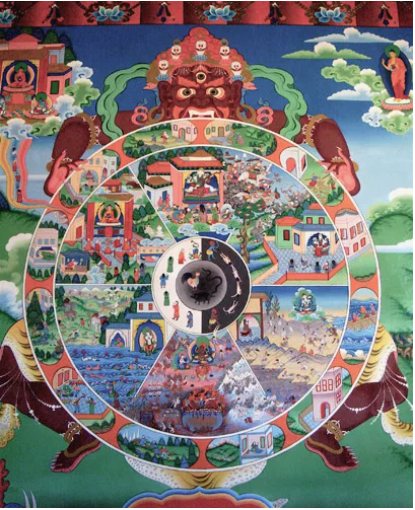
Visualizing the Buddhist reincarnation cycle can aid in understanding the complex interplay of karma, consciousness, and rebirth. A Buddhist reincarnation chart typically illustrates the Six Realms, depicting the potential destinations within the cycle of Samsara based on one’s actions and mental states. The chart serves as a visual guide to the intricate web of existence, highlighting the impermanent and ever-changing nature of life.
The innermost circle is the 3 poisons: a rooster (passion), snake (aggression) and pig (ignorance). The next ring. is the karmic cycle of the 12 nidanas. The 6 segment circle is the 6 realms – hell, preta, animal, human, asura, and gods. The narrowest circle is the 3 worlds – the god worlds of desire (physical body), form (body of light), and the formless (pure consciousness). The entire cycle is held by Yama, the Lord of death.
Samsara in Hinduism
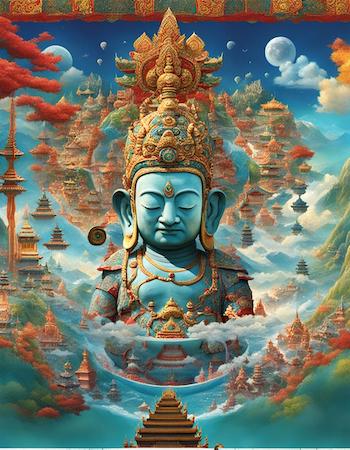
To understand the concept of Samsara in Buddhism, we need to explore its roots in Hinduism. In Hindu philosophy, Samsara refers to the cycle of birth, death, and rebirth—the continuous journey of the soul through various lifetimes.
The concept is intricately linked to the idea of karma, the accumulated actions from past lives influencing future incarnations. Samsara, in Hinduism, is often depicted as a wheel of existence, perpetuating the soul’s journey through different forms and experiences until it achieves liberation, known as Moksha.
In summary, Samsara in Buddhism represents the cyclical nature of birth, death, and rebirth, driven by ignorance and craving. While influenced by its roots in Hinduism, Buddhism introduces unique concepts such as Anatta (non-self) and the Six Realms. The path to liberation involves understanding the Four Noble Truths, breaking free from attachment and craving, and following the Eightfold Path to attain Nirvana—a state of profound peace and liberation from the perpetual cycle of Samsara. The Six Realms offer a nuanced understanding of the diverse experiences within Samsara, emphasizing the impermanent and interconnected nature of existence.

May all beings be happy
May all beings be peaceful
May all beings be safe
May all beings awaken to the light of their true nature
May all beings be free


